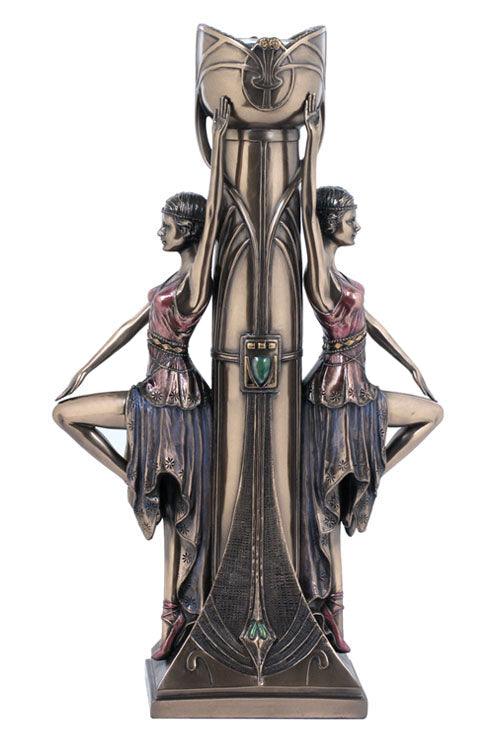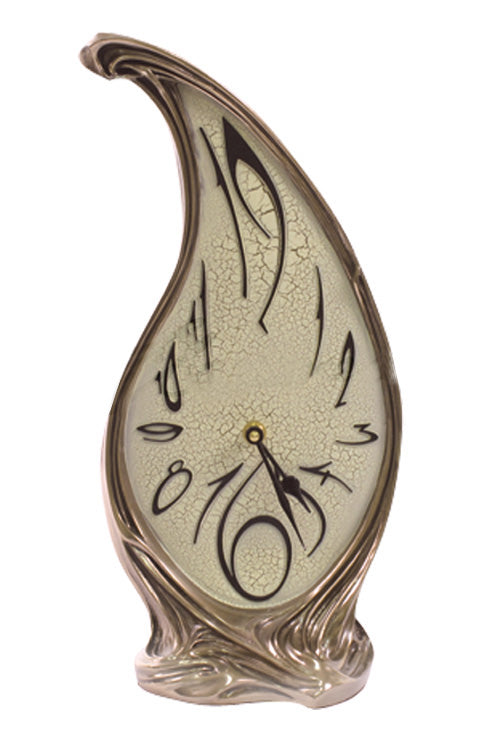Art Deco Statues: Capturing the Essence of Timeless Elegance
1. What is a Deco Statue?
Art Deco statues are a mesmerizing and iconic representation of the Art Deco movement that flourished in the early 20th century. These statues are characterized by their geometric shapes, sleek lines, and stylized forms, embodying a sense of luxury, glamour, and modernity. Art Deco was a significant artistic and design movement that influenced architecture, fashion, art, and, of course, sculpture.
2. Characteristics of Art Deco:
Art Deco, short for Arts Décoratifs, emerged during the interwar period, approximately from the 1920s to the 1940s. It boasted several defining characteristics:
a) Geometric Shapes: Art Deco favored geometric forms, such as triangles, circles, rectangles, and trapezoids, which were often meticulously arranged in symmetrical patterns.
b) Streamlined Design: The movement celebrated technological advancements and embraced a streamlined design aesthetic that exuded speed and movement.
c) Stylized Motifs: Art Deco incorporated exotic and stylized motifs influenced by cultures from Africa, Egypt, and Asia, as well as futuristic elements like sunbursts and zigzags.
d) Luxurious Materials: Fine materials like marble, ivory, bronze, and chrome were used to create opulent and visually striking artworks.
e) Sunburst Motif: The sunburst motif was a popular symbol in Art Deco, symbolizing a new era of hope and optimism.
3. Difference between Art Nouveau and Art Deco:
Art Deco is often confused with Art Nouveau, but they are distinct movements with different characteristics:
Art Nouveau: This movement predates Art Deco and was prevalent in the late 19th and early 20th centuries. Art Nouveau embraced flowing, organic lines inspired by natural forms like flowers and plants. It focused on craftsmanship and often featured intricate, detailed designs.
Art Deco: In contrast, Art Deco shifted towards bold geometric shapes, symmetry, and a more streamlined, modern look. It moved away from the organic forms of Art Nouveau and embraced a more industrial and machine-inspired aesthetic.
4. Art Deco Style:
Art Deco style transcended various mediums, including architecture, jewelry, fashion, and, of course, statues. The style was widely used in creating figurative sculptures, epitomizing the spirit of the era. Art Deco statues often depicted elegant, slender figures, reflecting the newfound liberation and changing roles of women during the 1920s and 1930s. These statues exuded sophistication and a sense of freedom, capturing the essence of the Roaring Twenties.
5. Place of Art Deco Statues in a Home or Office:
Art Deco statues add a touch of timeless elegance and allure to any space, be it a home or an office. Here's how the following Art Deco statues could be placed in different settings:
a) Panther on the Prowl Statue: The sleek and powerful panther statue embodies grace and strength. It can be placed in an office space, symbolizing determination, leadership, and a go-getter attitude.
b) Nude French Maiden Sculpture: This artistic and tasteful sculpture can be a focal point in a living room or a bedroom, representing beauty, freedom, and a celebration of the human form.
c) Egyptian Queen Lying on Chaise Sculpture: The allure of ancient Egypt combined with the Art Deco style creates a stunning piece that would sit perfectly in a study or a lounge area, adding an air of mystery and sophistication.
d) Melting Clock: Inspired by Salvador Dali's famous surrealist artwork, this intriguing piece can be a conversation starter in a contemporary office, inspiring creativity and an out-of-the-box approach to problem-solving.
e) Tiffany-Stained Glass Lamp: While not a statue, Tiffany lamps are quintessential Art Deco pieces. Placing one in a living room or an office can illuminate the space with a warm, colorful glow, infusing a touch of Art Deco charm into the environment.
In conclusion, Art Deco statues are not just decorative elements; they embody the spirit of an era that embraced modernity, elegance, and a sense of optimism. Their presence in a home or office can elevate the aesthetic and evoke the sophistication of a bygone era, making them a timeless addition to any space.

















